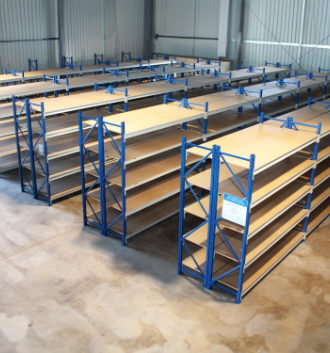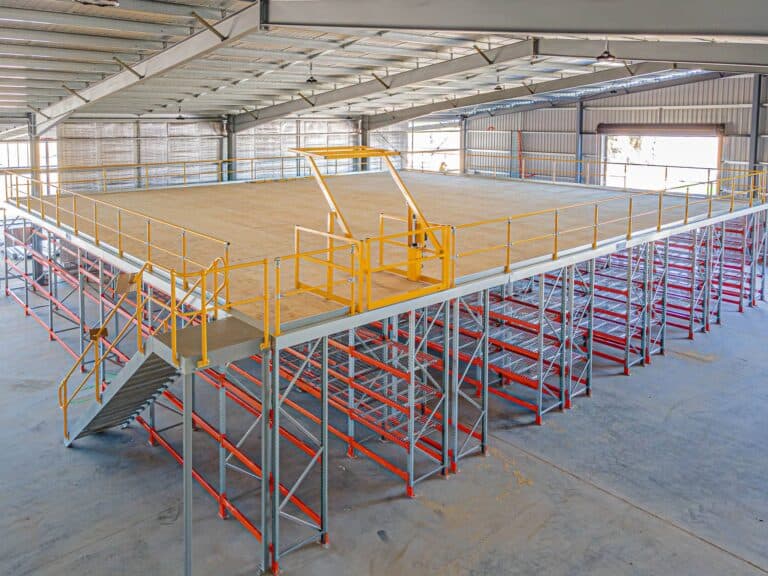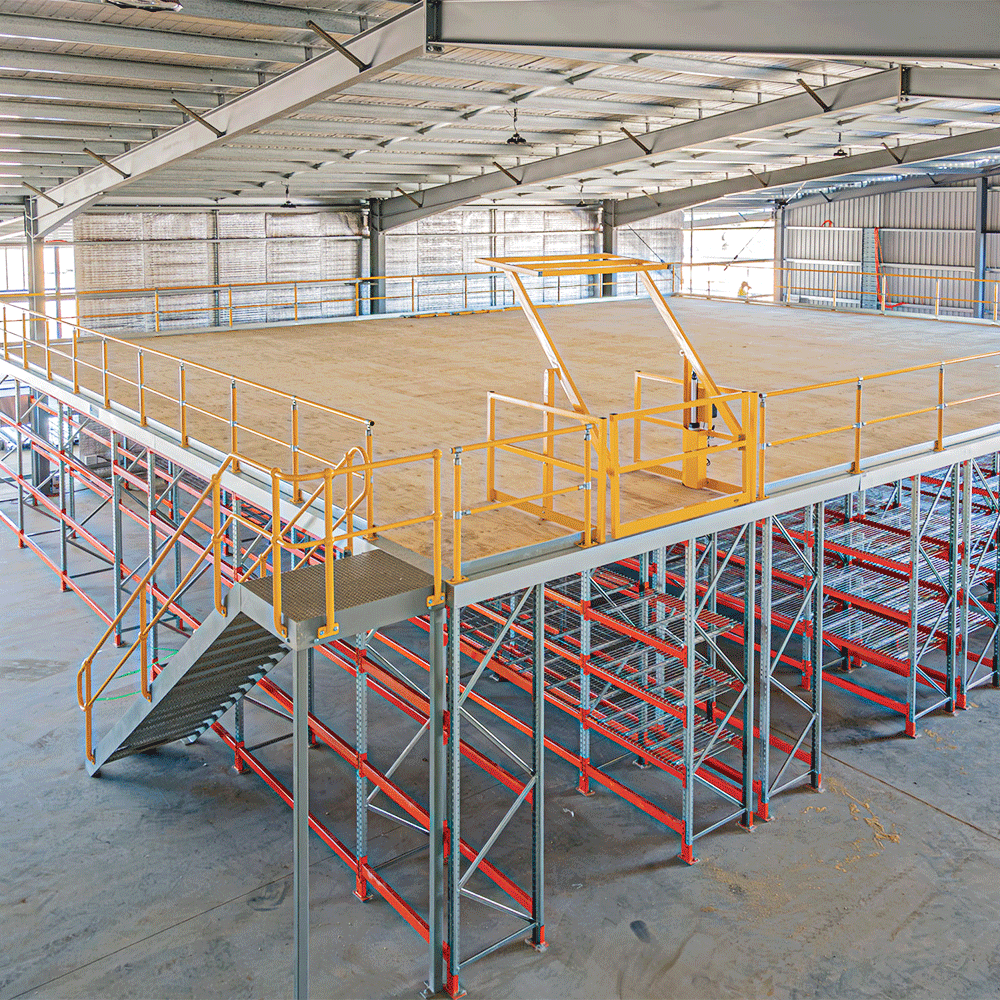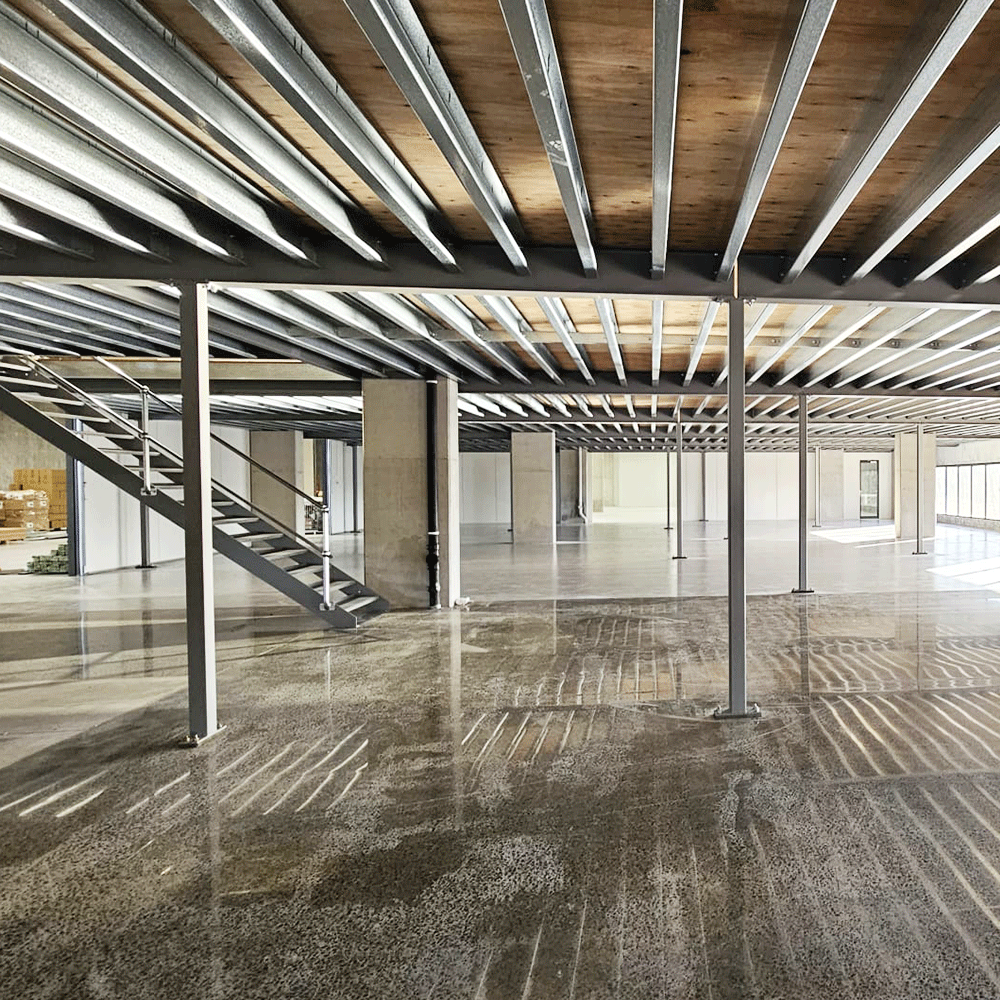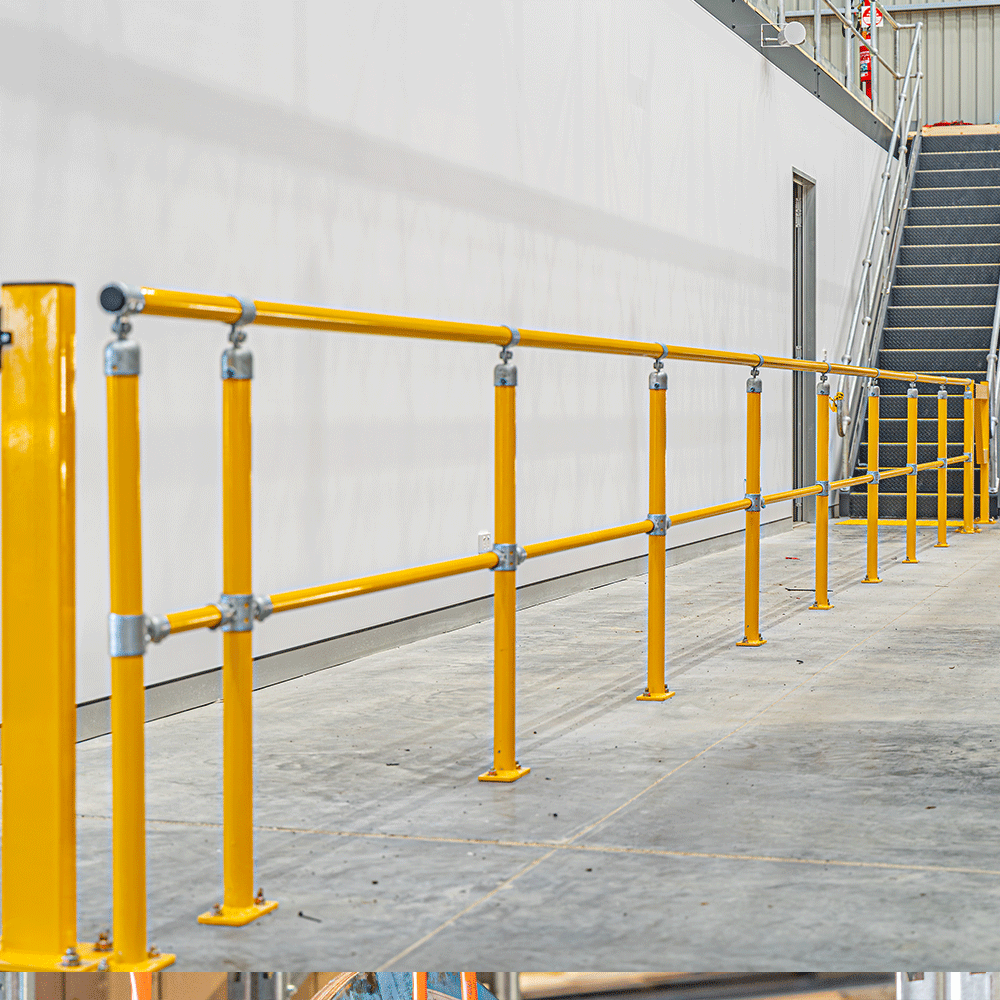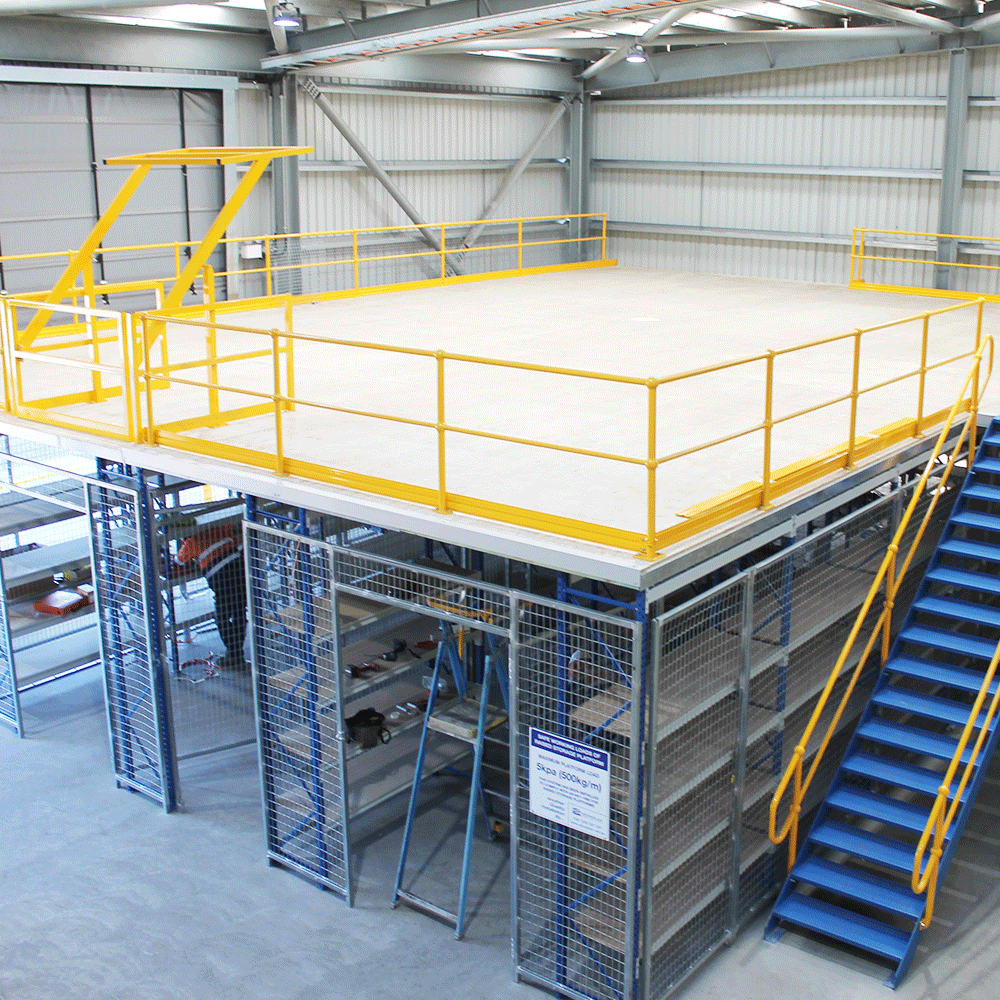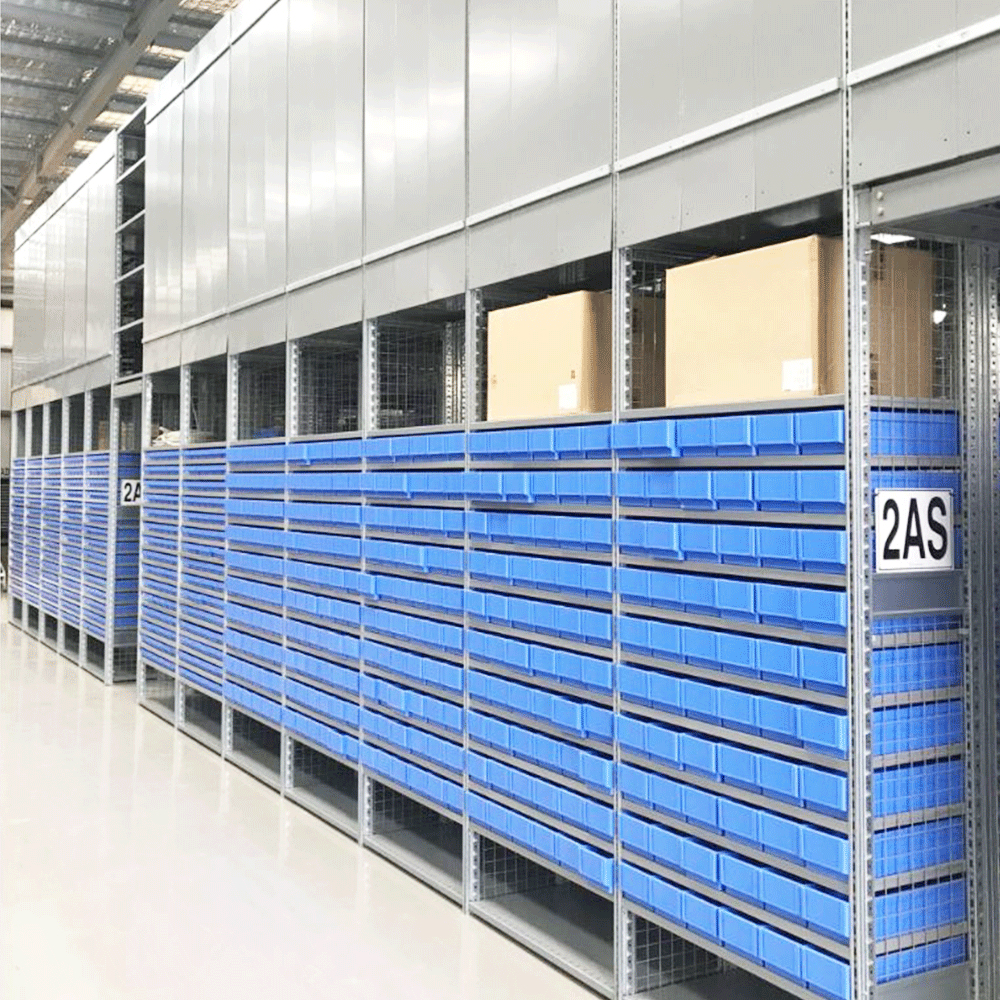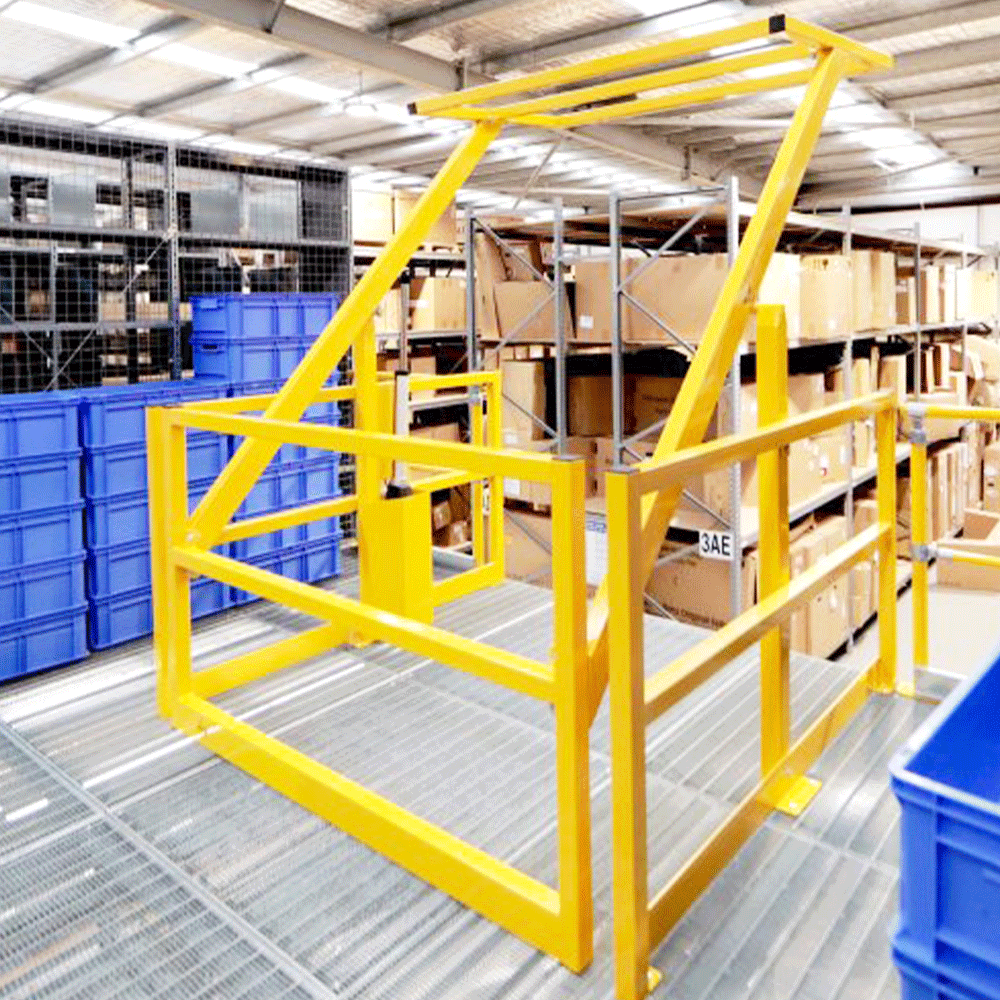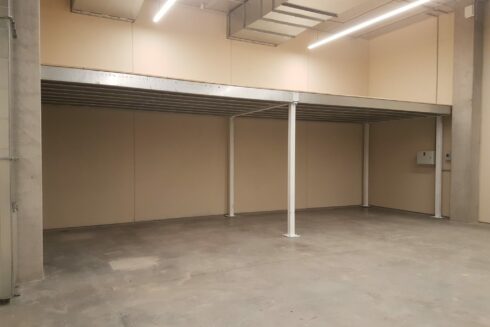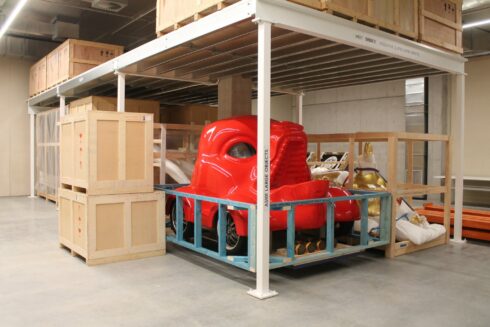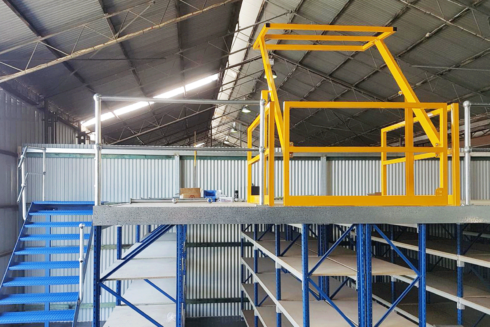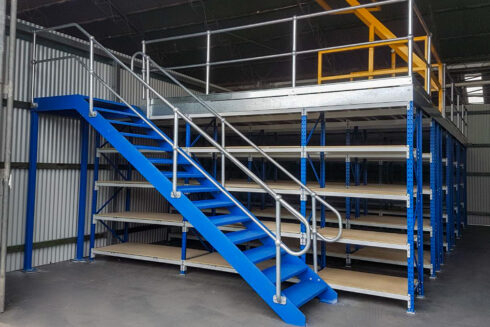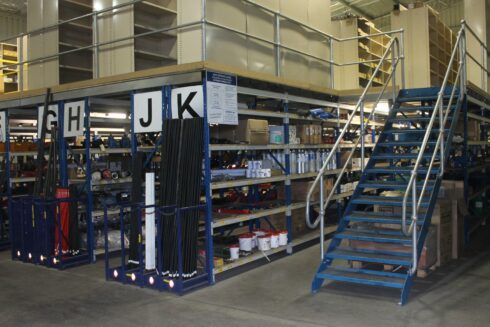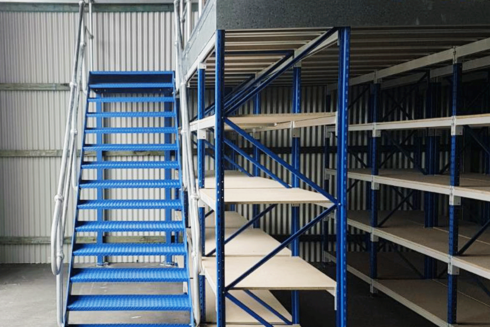Mezzanine Floors
Mezzanine Floors Australia | Double Your Warehouse Space Without Moving
Increase usable floor space by 50-100% without relocation costs or lengthy construction. Custom-engineered steel mezzanine systems installed in 2-4 weeks with full Australian compliance.
Running out of warehouse space? A mezzanine floor adds a complete second level to your facility, giving you room for storage, picking stations, offices, or production areas without changing your building footprint. Most clients recover their investment within 18-24 months through eliminated relocation costs and improved operational efficiency.
Mezzanine systems increase usable warehouse space by 50-100% and can be installed in 8-12 weeks with minimal business disruption. This dual-level approach costs 40-60% less than relocating and avoids the lengthy construction approvals required for building extensions. The ground floor stays clear for high-traffic operations while the upper level handles storage, order fulfillment, or administrative functions.
E-commerce fulfillment centers and manufacturing facilities see the greatest benefits. Separating storage from active operations reduces material handling time by 20-35% and eliminates floor congestion. Storeplan designs and installs mezzanine systems across Australia with full engineering certification, turnkey project management, and compliance with all Australian building standards.
-
Pallet Rack Mezzanine
-
Pallet Racking Supported Mezzanine
-
Structural Mezzanine Floor
-
Longspan Supported Mezzanine
-
R3000 Shelving Supported Mezzanine
-
Accessories for Raised Storage Platforms
Choose the Right Mezzanine System for Your Operation
Different warehouse operations need different mezzanine solutions. Load requirements, span distances, and how you’ll use the space determine which system delivers the best value.
Structural Mezzanine Floors
Structural mezzanines handle the heaviest loads and longest spans. These free-standing steel structures support 5-10kPa (500-1,000kg per m²) and can span up to 15 meters without intermediate columns, keeping your ground floor clear for operations. Built from Australian steel with full engineer certification, they’re completely relocatable if you move premises. Choose from particle board, steel grating, or concrete-filled decking. Best for manufacturing facilities and heavy equipment storage. Typical cost: $800-1,200 per m² installed.
Pallet Racking Supported Mezzanines
When you need storage below and workspace above, pallet racking mezzanines deliver exceptional value. The racking provides structural support while creating high-density storage on the ground level, with a platform above for picking, packing, or assembly. Supporting 2.5-5kPa loads, these systems are easily reconfigured as your needs change. The most cost-effective dual-purpose option for distribution centers and e-commerce operations. Typical cost: $500-800 per m² installed.
Shelving Supported Mezzanines
For small parts and lighter loads, shelving mezzanines create 2-3 levels of accessible storage. The R3000 and Longspan systems handle 2.5-4kPa per level with open mesh decking that maintains lighting and sprinkler effectiveness. Ideal for automotive parts, electrical components, archives, and pick-pack operations where you’re handling smaller items with beam capacities from 300-900kg per level. Typical cost: $400-700 per m² installed.
Finding Your Best Fit
Structural mezzanines offer maximum capacity but cost more. Pallet racking systems excel for combined storage and workspace. Shelving systems provide the most economical option for lighter applications. Not sure which suits your operation? Call 1300 551 281 to discuss your requirements.
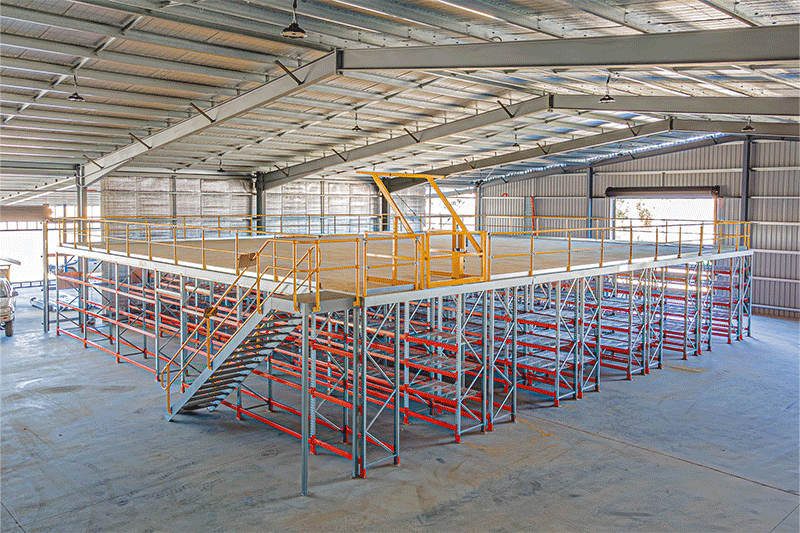
The Real Cost of Your Space Problem
Relocating to a larger warehouse costs most businesses between $350,000 and $500,000 when you factor in lease break fees, moving expenses, operational downtime, and new fitout costs. For a typical 1,500m² facility, you’re looking at 3-6 months of disruption and at least four weeks where productivity drops significantly.
A mezzanine floor gives you the same additional space for roughly 40-60% less investment. A 700m² structural mezzanine installed in your existing warehouse typically costs $420,000-550,000 and can be completed in 8-12 weeks with only 3-5 days of on-site installation. You avoid lease penalties, maintain your existing location, and keep operations running throughout the project.
Most businesses recover their mezzanine investment within 18-24 months through eliminated relocation costs, reduced rental cost per square metre, and improved operational efficiency from better space utilisation.
Understanding Permits and Approvals
Most mezzanine installations in Australia require building permits because they’re classified as structural alterations. Generally, permits are required when the floor area exceeds 10m², load capacity is above 3kPa, or the structure will be used for regular occupancy like offices or workstations. Requirements vary between states and local councils, particularly regarding fire safety provisions and structural certifications.
The approval process typically takes 2-4 weeks once structural drawings are submitted. You’ll need engineer-certified documentation showing compliance with AS/NZS 1170 structural standards and relevant Building Code of Australia provisions. Permit fees generally range from $800-2,500 depending on your location and project scale, with engineering certificates adding $3,000-8,000 to the overall project cost.
Storeplan manages the entire permit process as part of our turnkey service, from initial structural design through to final compliance certification after installation.
Why Businesses Choose Mezzanines Over Alternatives
A mezzanine floor costs 60-70% less than relocating to a larger facility and can be installed in a fraction of the time. While moving to a new warehouse might take 3-6 months and cost upwards of $400,000, a mezzanine delivers the same additional space in 8-12 weeks at roughly half the investment. You maintain your existing location, avoid lease break penalties, and keep operations running with minimal disruption.
Compared to building an extension, mezzanines offer significant advantages in speed and flexibility. There’s no need for lengthy council approvals for external construction, no foundation work, and no permanent changes to your building. The structure remains fully relocatable, meaning you can take it with you if you eventually move to a different facility. Installation is typically 40-50% faster than traditional building extensions.
The immediate operational benefits are substantial. Ground floor space is freed up for high-traffic activities like receiving, dispatch, and production, while the mezzanine level handles storage, order picking, or administrative functions. This separation reduces material handling time by 20-35% and eliminates the congestion that comes from trying to do everything on a single level.
All mezzanine systems are modular and scalable. As your business grows, you can add bays, reconfigure layouts, or increase load capacity without rebuilding from scratch. The structure is classified as removable equipment rather than a permanent fixture, which often makes it easier to gain landlord approval and maintains flexibility for future changes.

Why Choose Storeplan for Your Warehouse Mezzanine Floor?
Storeplan is renowned for its high-quality, customised warehouse solutions nation-wide. Here’s why:
- A full range: Our variety of mezzanine flooring options ensures that each business can find the right product that suits their specific needs. Whether you need a simple pallet rack mezzanine or a complex, multi-storey structure, we have you covered.
- Custom-made solutions: Each warehouse is unique and has different needs. We tailor our solutions to fit seamlessly into your warehouse setup, optimising the use of available space and enhancing productivity.
- Safety-compliant products: At Storeplan, we place utmost importance on safety. All our products are therefore fully compliant with Australian safety standards.
- Personalised customer service: We hold true to our core values of being approachable, personal and supportive, always going above and beyond to ensure customer satisfaction.
- Complete service package: Besides providing high-quality products, we also offer full service, from consultation and product recommendation to installation and after-service support.
To experience the transformative potential of a warehouse mezzanine floor, give us a call today at 1300 551 281.
Frequently Asked Questions About Mezzanine Floors
A warehouse mezzanine floor is an additional floor installed above the existing warehouse level. This innovative system increases the available floor space in a warehouse, enhancing storage capacity by utilising vertical space.
The cost of a mezzanine floor can vary widely depending on the size, design, materials, and complexity of the installation. On average, a mezzanine floor can cost anywhere from $100 to $300 per square metre, with additional costs for customisation, engineering certifications, and accessories. For a more accurate estimate, it’s advisable to contact a mezzanine floor provider like Storeplan for a tailored quote based on your specific requirements and space.
To satisfy varying flooring requirements, numerous types of floors are available for installation. These include chipboard, mesh-grid, plywood, and fully prefabricated concrete slab. You should also consider whether the floor needs to withstand high traffic (offices) or heavy pallet trolleys. These factors will influence the overall cost of the build.
The weight capacity of a mezzanine floor depends on several factors, including its design, the materials used, and the type of support system. Most mezzanine floors are engineered to hold between 500 kg to 1,000 kg per square metre, with some custom systems designed to support even heavier loads. It’s essential to consult with a professional to ensure that the mezzanine is designed to meet your specific weight requirements and complies with local building codes.
In many cases, mezzanine floors do require planning permission, especially if they significantly alter the layout of the building or affect the structure. Factors such as the size of the mezzanine, the load it will bear, and local zoning laws may determine whether permission is required. It’s essential to consult with your local council or a professional mezzanine provider to ensure that all necessary permits and approvals are obtained before construction begins.


